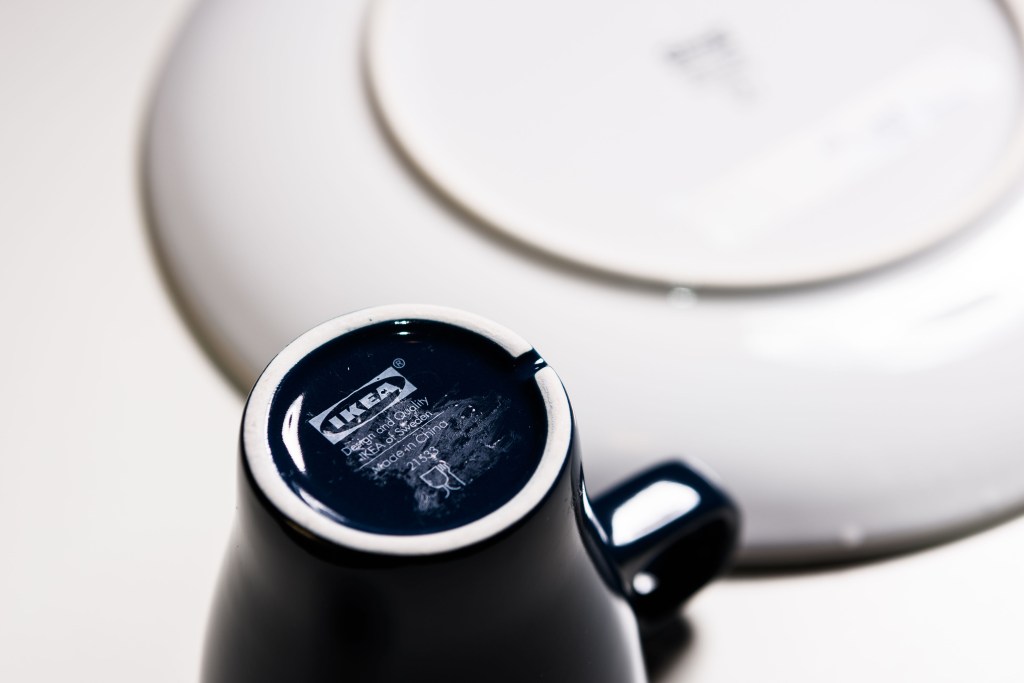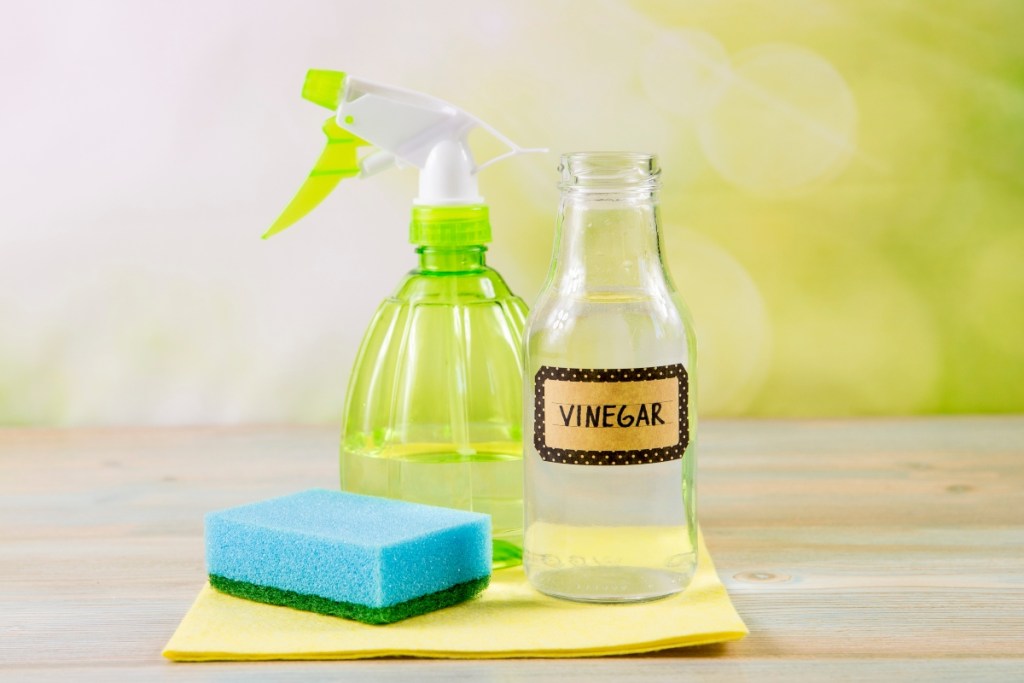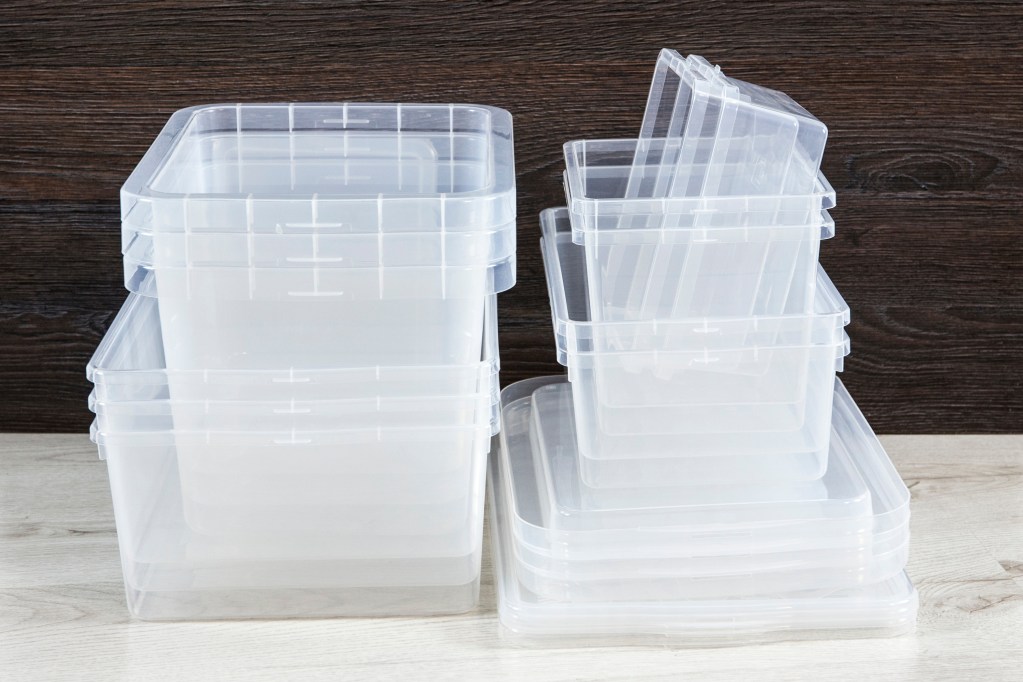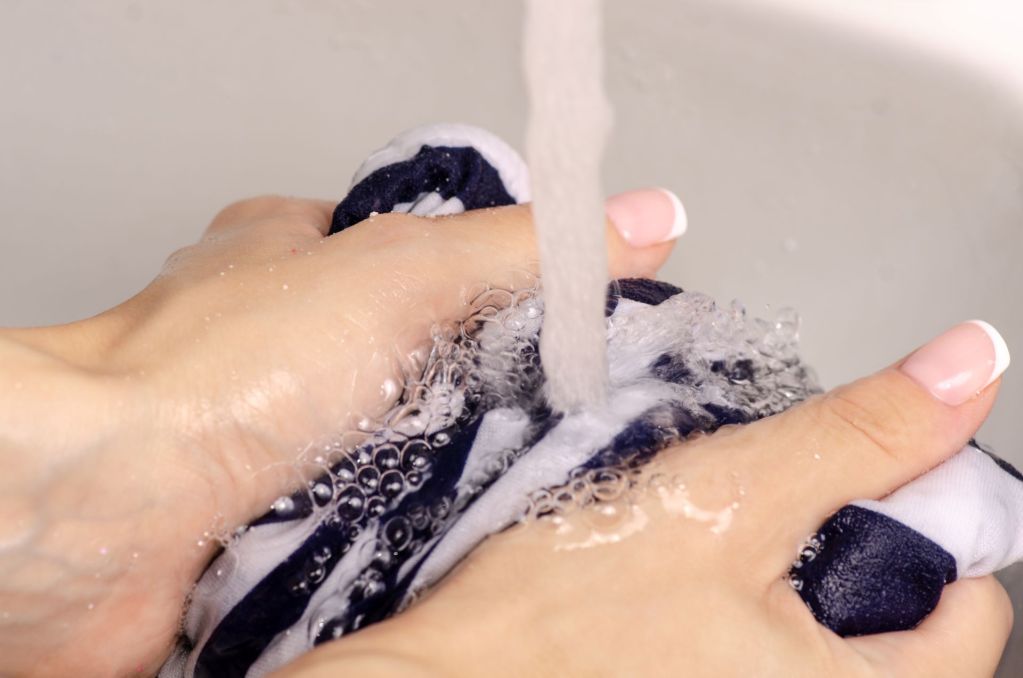
Getting newly purchased items is always a thrill. But, from dinner plates to furniture pieces, the worst part of buying new home items is peeling off the price tag and stickers. The super-strong adhesive often leaves behind an annoyingly gooey residue that can be difficult to remove. No matter how much you scrape or peel, there always seems to be a little gunk left behind.
Don’t drive yourself nuts trying to get off the sticky residue by hand — there’s a better way! There are lots of tried-and-true methods for how to remove sticker residue, all of which use products you likely already have at home.
How to remove sticker residue from most materials

Sticker residue can be difficult to remove completely from any surface. Even for tough-looking adhesives, we recommend starting with a gentle method and moving up to more abrasive methods if needed. Remove as much of the residue as possible using your fingers or a plastic scraping tool, like a credit card. Then, try one of these residue removal methods.
- Hairdryer: Heat the area with a hairdryer, starting with low heat and low power. This dissolves the adhesive, making it easier to scrape the rest off.
- Rubbing alcohol or vodka: Soak the adhesive in the alcohol, let it sit for a few minutes, then wipe it off. This technique is safe to use on plastic, glass, wood, and fabric.
- Distilled white vinegar: To remove residue without relying on alcohol, turn to vinegar. Wet a paper towel with vinegar and cover the sticky area. Let it sit for a few minutes, then scrape away the residue.
- Common household oils: You can use coconut oil, baby oil, or mineral oil to clean up sticky spots. Dab the oil on the residue and let it sit for five minutes. Scrape off the remaining goo and soak up the oil with a paper towel.
- Store-bought adhesive removers: If none of the techniques above work, consider using a commercial adhesive remover, like Goo Gone. Read the instructions carefully before applying the product.
Removing residue from glass

When removing residue from glass, mirrors, ceramics, and other non-porous materials, the biggest challenge is not scratching the surface. Instead of sponges or steel wool, try one of these tactics.
- Hot water and dish soap: If you can wash the item, fill your kitchen sink with hot water and dish soap. Let the object soak for at least 30 minutes. The sticker should come right off. Remove any remaining residue with a soft dishcloth.
- Baking soda and cooking oil: If a sticky mess remains after washing, rub baking soda and a little bit of cooking oil on the adhesive. Let it sit for ten minutes to break down the glue. Then, wipe off the stickiness with a paper towel.
- Nail polish remover: Using a cotton ball, dab acetone on the residue. Wait a few minutes, then wipe off the area.
- Razorblade: Scraping with a razor blade should be a last resort. Carefully shave off the leftover adhesive and wipe down the area with a damp cloth.
How to get sticker residue off metal

Metal is one of the easiest surfaces to remove sticker residue from, but the process still requires caution. Scrubbing too much can buff bare metal or damage painted metal. To remove a sticker without harming bare metal, use baby oil.
- Coat the area with the oil and let it sit for 20 minutes.
- Use a baby oil-soaked rag or cotton ball and wipe the surface gently until the residue is gone.
- Wipe off the oil with a clean cloth.
- If you need something a little more substantial, swap the baby oil for WD-40.
If the metal surface is painted, you can use a mixture of equal parts coconut oil and baking soda. Baking soda helps break up the residue, and the oil prevents any damage to the finish. Follow the same instructions above, but instead of baby oil, dip a microfiber cloth in this solution.
How do you remove sticker residue from plastic?

With plastic items, you can use many of the same residue removal methods as glass. Keep in mind that plastic isn’t as durable as glass, and rubbing too hard can dull the surface. For a gentler tactic, try one of the solutions below.
- Cooking oil: Cover the sticker with oil and let it sit for five minutes before wiping away the dissolved adhesive. Clean the surface with soap and water to eliminate any oily residue.
- Peanut butter: The oils in peanut butter can safely break down adhesive on plastic, wood, and other surfaces. Let the peanut butter sit on the residue for five minutes, then wipe it off.
- WD-40: Spray a small amount of WD-40 on a paper towel and dab the sticky area until it dissolves. Wipe off any excess with a clean cloth and wash the space to finish.
Removing sticker residue from wood

Since wood is porous, sticker residue can sometimes get into the grain and become very difficult to remove. To get rid of any sticky goo and save your wood furniture:
- Heat the area with a hairdryer or heat gun on the lowest setting.
- Rub a bit of hand cleaner, like Fast Orange, on a piece of pumice and scrub the residue along the grain.
- Continue rubbing until the surface is clear.
- Wipe the wood with a microfiber cloth to remove any leftover hand cleaner.
Getting sticker residue off clothing

Occasionally, stores place stickers directly on clothing items such as cotton T-shirts or denim jeans. If those stickers leave residue, here’s the best way to remove it so your clothes look spotless and new:
- First, pick off as much sticker residue as you can with your fingers.
- If the clothing is made of natural fibers, rub acetone over the residue spot with a cloth. Then wash and dry the item like you normally would.
- If the clothing is made of synthetic material, put it in the freezer for about an hour. Then pluck off the frozen bits of sticker residue. For the bits that don’t come off, rub the remainder off with dish soap and water. Wash and dry as normal.
How to remove sticker residue from paper

Sticker residue can be a stubborn nuisance on paper items such as books, cards, or posters, often stemming from price tags or adhesive labels. Whether you’re restoring a vintage book or salvaging a sentimental card, removing this residue requires delicacy to avoid damaging the paper. Begin by assessing the paper’s fragility and testing any cleaning methods on a small, inconspicuous area. To remove sticker residue effectively:
- Gently peel off as much of the sticker as possible without tearing the paper.
- Dab a small amount of rubbing alcohol or lighter fluid onto a cotton ball or swab.
- Gently rub the residue in a circular motion until it begins to loosen.
- Use a soft eraser or microfiber cloth to carefully lift away the loosened residue.
- Repeat steps 2-4 as needed until the residue is entirely removed.
- Allow the paper to air dry completely before storing or displaying.
Sticker residue will always be an annoyance, but with these simple methods, you can save yourself a lot of frustration. These easy techniques use products that you likely already have in your home, so you don’t have to worry about special ordering any expensive products. Plus, they’re safe to use and won’t damage your new product. Next time you buy something new for your home, rise above sticky residue with these simple solutions.



